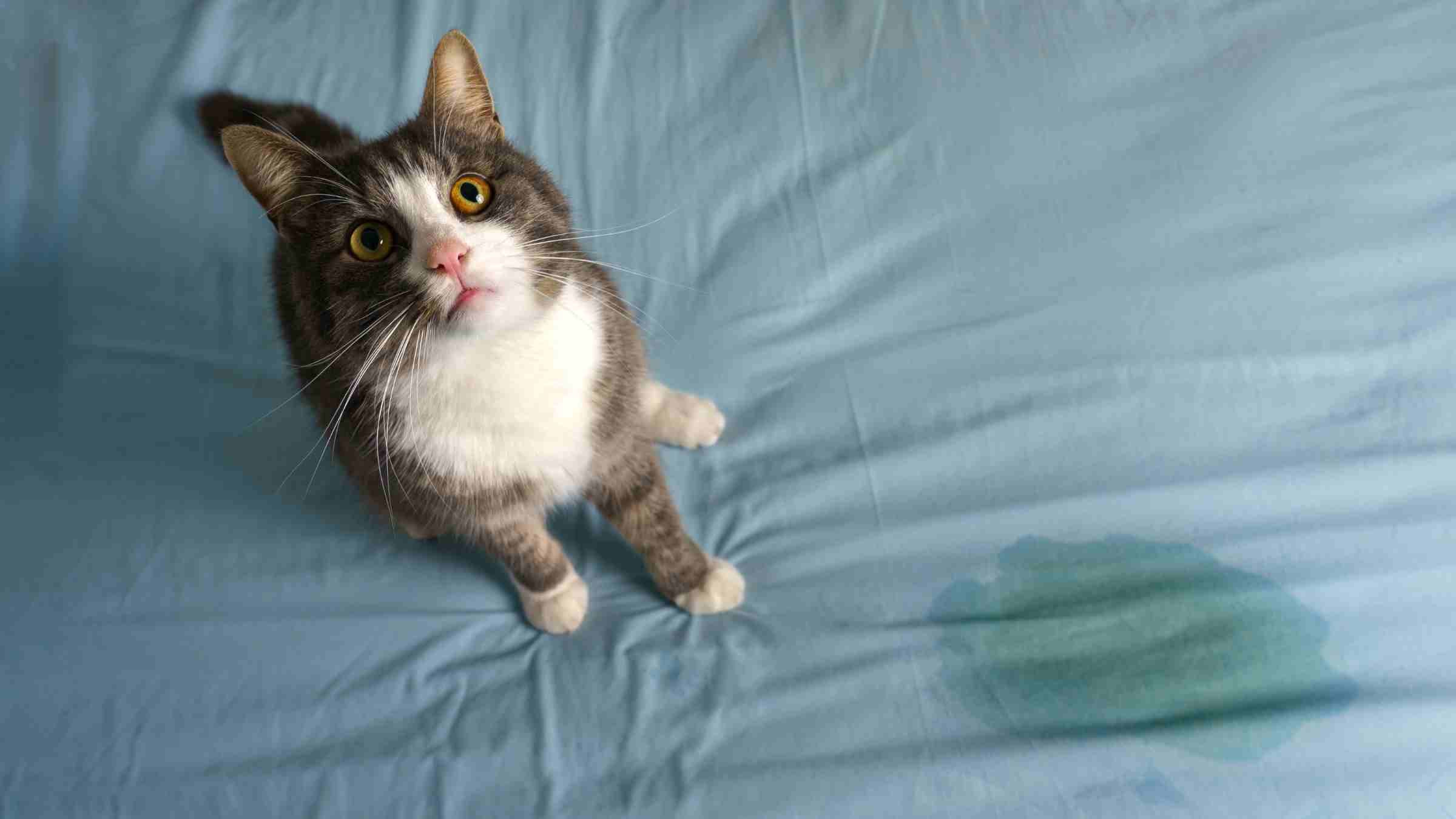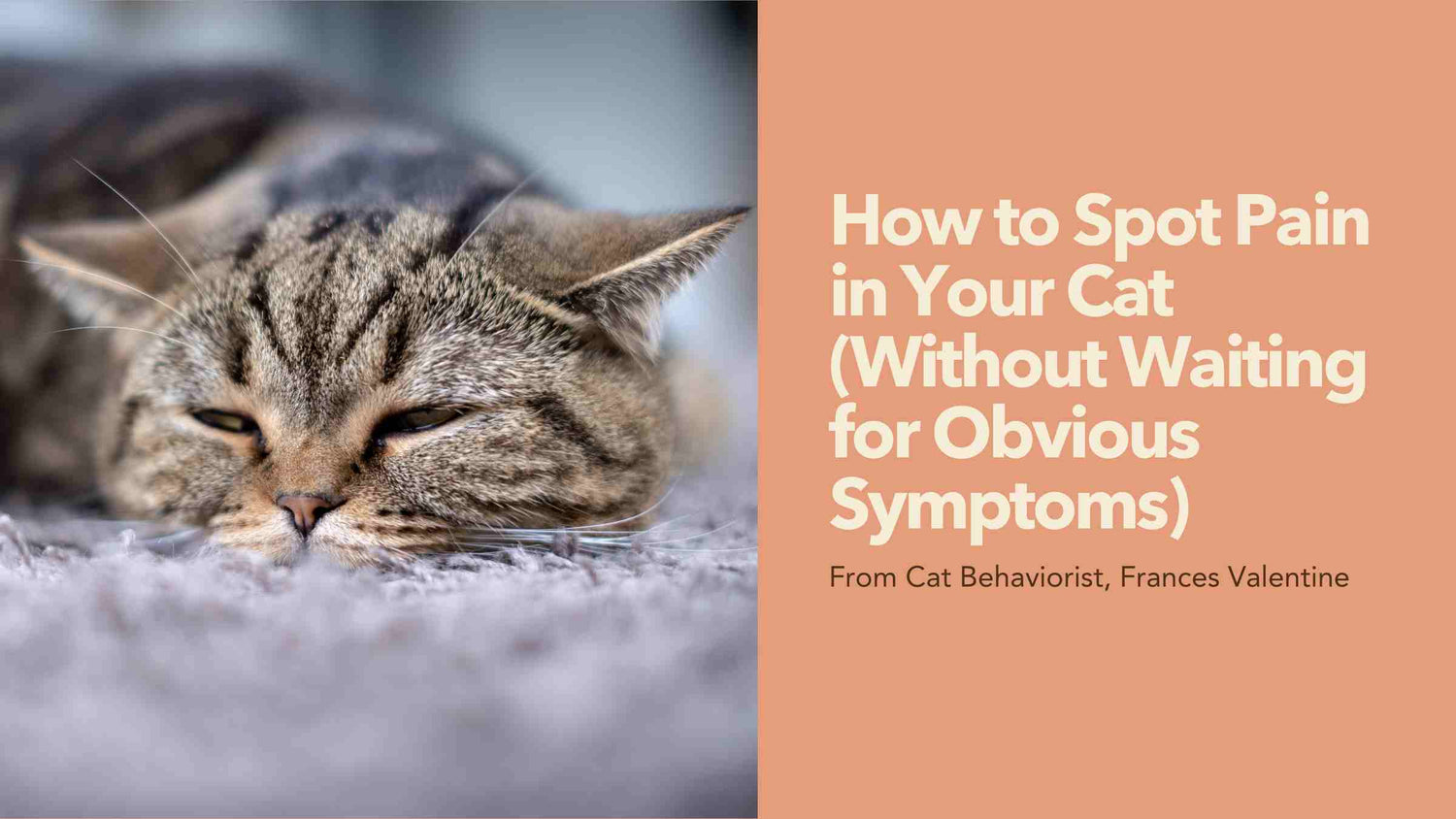Table of Contents
- Understanding Litter Box Aversion
- Environmental Factors Influencing Litter Box Use
- Emotional Causes of Litter Box Avoidance
- Medical Causes of Litter Box Avoidance
- Tips for Encouraging Litter Box Use
- Behavioral Training Techniques for Litter Box Success
- Seeking Professional Help for Persistent Litter Box Issues
- Additional Resources
- FAQs
Have you ever found yourself frustrated and confused by your cat's refusal to use the litter box? It's a common concern among cat owners, but fear not! In this blog post, we'll dive into some of the reasons why cats sometimes snub their litter boxes and offer practical solutions to tackle this issue head-on. By gaining insight into your cat's behavior, you'll be better equipped to create an environment that fosters litter box success and you’ll be able to implement strategies that can help resolve this common problem.
Understanding Cat Litter Box Aversion
Litter box aversion can be a puzzling and frustrating issue for cat owners to tackle. Understanding the underlying reasons behind this behavior is crucial for creating an environment that promotes proper litter box usage. So let’s first start by understanding what could be causing the aversion and what signs and symptoms to be on the lookout for.
Causes of aversion
Cats may avoid the litter box for several reasons, including environmental, emotional, and medical factors. Environmental factors can include issues with the litter box itself, such as its placement, cleanliness, or type of litter used. Emotional factors, such as stress, anxiety, or changes in the household environment, can also play a significant role in litter box aversion. Additionally, medical conditions, such as urinary tract infections or arthritis, can cause discomfort or pain, leading to avoidance behaviors. In the following paragraphs, we'll delve deeper into each of these potential causes and provide actionable solutions to address them.
Signs of aversion
Recognizing the signs of litter box aversion is crucial for identifying and addressing the issue promptly. Behavioral cues that may indicate your cat is experiencing litter box aversion include:
- Consistently avoiding the litter box
- Urinating or defecating outside the box
- Urinating or defecating right next to or on the litter box
- Perching on the edge of the litter box without touching the litter
- Scratching the sides of the litter box or outside of the litter box
- Excessive grooming of the genital area
- Vocalizing or crying while using the box
- Refusing to bury their waste
- Changes in litter box habits, such as increased frequency or hesitation before entering the box
By paying attention to these behavioral cues, you can intervene early and take steps to resolve any underlying issues affecting your cat's litter box behavior.
Environmental Factors Influencing Litter Box Use

Creating the right environment for your cat's litter box is essential for encouraging regular and appropriate toileting behavior. Environmental factors such as litter box placement, the number of litter boxes available, and the cleanliness of the litter box can all significantly impact your cat's willingness to use it. Let’s dive into the criteria to consider to optimize your cat’s litter box experience.
Litter box placement
The placement of the litter box plays a crucial role in your cat's decision to use it. Cats prefer privacy and quiet when using the litter box, so it's essential to place it in a calm, low-traffic area of your home. Avoid placing the litter box near noisy appliances, such as washing machines or dryers, or in areas with high foot traffic, as these can cause your cat to feel anxious or uncomfortable. Additionally, ensure that the litter box is easily accessible to your cat, with no obstacles or barriers preventing them from reaching it.
Number of litter boxes
In multi-cat households, having multiple litter boxes is essential to prevent competition and reduce stress among the cats of your household. The general rule of thumb is to provide one litter box per cat, plus one extra. This ensures that each cat has access to a litter box whenever they need it and reduces the likelihood of territorial disputes or accidents. Place the litter boxes in different areas of your home to give each cat their own designated space, and avoid clustering them together in one location.
Litter box design & litter choice
Just like us, cats have their own preferences when it comes to their bathroom habits. The type of litter used in the litter box can impact a cat's willingness to use it. Some cats have preferences for certain types of litter, such as pellets or sand, clumping or non-clumping, scented or unscented. A general rule of thumb is to avoid overly perfumed or scented litters, as they may be off-putting to some cats, and opt for unscented varieties instead. It is essential to experiment with different litter types to determine which one your cat prefers.
In addition to the type of litter, it's essential to consider the size and design of the litter box itself. Some cats may feel uncomfortable in small or covered litter boxes, as they can restrict movement and trap odors. Opting for a larger, open litter box with low sides can provide a more inviting and comfortable space for your cat to do their business.
While automatic litter boxes may seem convenient to you, some cats may find them intimidating or frightening due to the noise and movement they produce. It's essential to observe your cat's reaction to an automatic litter box and consider their comfort and perceived safety before using one.
By paying attention to your cat's preferences and providing them with a litter box that meets their needs, you can create a comfortable and inviting bathroom environment that encourages regular litter box use.
Litter box cleanliness

Cats are naturally clean animals and may refuse to use a dirty or soiled litter box. Scoop the litter box at least once a day (twice per day would be better) to remove waste and clumps. Make sure to maintain at least 2-3” of clean litter in the litter box at all times and avoid overcrowding the litter box with excessive litter (it will just get kicked out anyways). Perform a deep cleanse of the litter box at least once per month. Read this blog post for a full litter box maintenance routine. Regular cleaning not only ensures your cat's comfort but also helps prevent odor buildup and the spread of bacteria, creating a hygienic and inviting environment for your cat.
By paying attention to these environmental factors and making adjustments as needed, you can create a litter box setup that promotes your cat's comfort and encourages regular toileting behavior.
Emotional Causes of Litter Box Avoidance

In addition to the physical environment, the emotional well-being of the cat is also crucial in promoting litter box use. Cats may avoid using the litter box if they are stressed, anxious, or feeling unwell.
Cats are sensitive creatures, and changes in their environment or routine can trigger feelings of stress and anxiety. For example, moving to a new home, introducing a new pet or family member, or changes in their daily schedule can all cause stress for cats. Additionally, cats can experience anxiety due to past traumatic events, such as being trapped, experiencing loud noises, or having a dog walk by while using the litter box.
Stress can manifest in various ways in cats, including changes in appetite, excessive grooming, hiding, or aggression. These behavioral changes can extend to their litter box habits, leading to avoidance or inappropriate elimination. It's essential to address the underlying emotional causes of litter box avoidance to help your cat feel more comfortable and secure in their environment.
To alleviate stress and anxiety in cats, it's crucial to create a calm and predictable environment for them. Providing hiding spots, elevated perches, and designated safe spaces can help cats feel more secure and in control. Additionally, engaging in interactive play sessions, providing mental stimulation through toys and enrichment activities, and positive reinforcement can help reduce stress, promote relaxation, and encourage your cat to use the litter box consistently.
Reward your cat with treats or praise when they use the litter box appropriately, and avoid punishment for accidents, as this can exacerbate aversion and anxiety. The last thing you want to do is scare your cat even more and break the trust you’ve built with him or her.
By addressing the emotional causes of litter box avoidance and creating a supportive environment for your cat, you can help them feel more comfortable and confident in using their litter box regularly. If your cat's aversion persists despite these interventions, consult with your veterinarian to rule out any underlying medical issues and explore additional treatment options. Next, we’ll dive into what these potential medical causes may be.
Medical Causes of Litter Box Avoidance
When it comes to understanding why your cat may be avoiding the litter box, it's essential to consider potential medical causes. Cats can develop various health issues that impact their urinary and digestive systems, leading to discomfort or pain associated with using the litter box.
Urinary tract issues

One common medical cause of litter box avoidance in cats is urinary tract issues. Conditions such as urinary tract infections (UTIs), urinary stones, or blockages can cause discomfort and pain during urination, leading cats to associate the litter box with discomfort and avoiding it altogether. According to the American Society for the Prevention of Cruelty to Animals (ASPCA), UTIs are relatively common in cats and can result from bacterial infections or other underlying health issues.
Pain or discomfort
Aside from urinary tract issues, cats may also experience pain or discomfort due to other medical conditions or injuries. Arthritis, for example, is a common condition in older cats that can cause joint pain and stiffness, making it difficult for them to access or use the litter box comfortably. Additionally, gastrointestinal issues such as constipation, diarrhea, inflammatory bowel disease, food sensitivities, or even gastrointestinal cancers can also lead to discomfort while using the litter box.
If you suspect that your cat's litter box avoidance may be due to a medical issue, it's crucial to consult with a veterinarian right away. A veterinarian can perform a thorough physical examination and diagnostic tests, such as urinalysis or imaging studies, to identify any underlying health problems. Early detection and treatment of medical issues are essential for addressing litter box problems effectively and preventing further complications. Remember, only a qualified veterinarian can provide a proper diagnosis and treatment plan tailored to your cat's specific needs.
Tips for Encouraging Litter Box Use
There are several tips and techniques that can help encourage a cat to use the litter box:
- Keep the litter box clean and free of odor by scooping it daily and replacing the litter regularly.
- Provide multiple litter boxes in different areas of the house, especially in multi-cat households.
- Choose a litter type and texture that your cat prefers. Experimenting with different options can help find the most suitable one.
- If you recently switched to a new litter, it’s likely that your cat hasn’t accepted the new litter and you need to go through the transition process again.
- Make the litter box easily accessible and ensure it is placed in a quiet and low-traffic area. Make sure the cat doesn’t feel “cornered” and they can escape (if needed) from all angles.
- Maintain 2-3” of clean litter in the litter box at all times. Most cats like a shallow bed of litter that’s easy to dig in.
- Remove any litter box liners or lids (if you’re currently using them).
- If you’re using an automatic litter box and your cat stops using the box, try switching to a traditional large, open litter box.
- Make sure your cat’s food and water bowls are far enough away from their litter box. (Would you like to eat where you poop?…)
- Make sure you’re not using ammonia-based cleaners to clean up the mess. Urine contains ammonia and cleaning with ammonia could encourage the kitty to use the same spot again.
- Never, ever punish or yell at your cat, or stick their nose in the mess.
Behavioral Training Techniques for Litter Box Success

Now that you know some practical tips to implement to encourage litter box use, let's delve into more proactive, behavior-based training techniques that can help foster positive litter box habits in your cat:
- Gradually introduce your cat to the litter box by placing them in it shortly after meals or naps.
- Reward your cat with treats and praise when they use the litter box correctly.
- Provide supervision and redirect your cat to the litter box if they show signs of needing to eliminate elsewhere. Maintain a calm, empathetic, and patient demeanor through this process. You’ll create a sense of security and trust that encourages positive behavior, including proper litter box usage.
- Place a new litter box near the location where the inappropriate urination occurred and encourage them to use it. After several days, move it two to three feet closer to the original location every day until it is back where it belongs.
- Prevent access to areas where your cat has previously eliminated outside the litter box. Cover the area with aluminum foil or double-sided tape; cats typically hate walking on these types of surfaces or textures.
Seeking Professional Help for Persistent Litter Box Issues
If the issue persists despite implementing various strategies, it may be beneficial to seek professional help. A veterinarian or a feline behaviorist can provide tailored guidance and develop an individualized plan to address the specific litter box problems.
Understanding cat behavior and taking appropriate steps to resolve litter box issues can significantly improve the overall well-being of both the cat and its owner. It is essential to address the problem promptly to prevent further complications and promote a healthy and harmonious relationship between the cat and the humans in the household.
Wrapping it up
Remember that addressing your cat's litter box aversion requires patience, understanding, and a willingness to explore various solutions. By taking proactive steps to identify and address potential triggers, providing a clean and inviting litter box environment, and seeking professional guidance when needed, you can help your cat overcome this common challenge. Ultimately, creating a positive relationship with your cat is the key to creating a harmonious home where both you and your cat can enjoy the peace and tranquility you both deserve.
Additional Resources
- To learn more about finding a certified behaviorist, talk to your vet or try Certified Applied Animal Behaviorists.
- You can look for an AAFP Veterinary Member or find a Cat Friendly Practice at the American Association of Feline Practitioners website.
- Look up members of the American College of Veterinary Behaviorists. Veterinarians who are board-certified in behavior have undergone extensive training and education in animal behavior.
- You can find a behavior consultant through the International Association of Animal Behavior Consultants.
FAQs
What does cat litter box aversion mean?
Answer: Cat litter box aversion refers to a situation where a cat avoids using the litter box for urination or defecation. It can manifest due to various reasons, including discomfort with the litter box's cleanliness, dislike of the litter type or texture, stress or anxiety, medical issues, or environmental factors. Cats may exhibit avoidance behaviors such as eliminating outside the litter box or showing signs of distress when approaching it. Understanding the underlying cause of litter box aversion is crucial for implementing effective solutions to encourage proper litter box usage by your cat.
How common is litter box aversion?
Answer: According to a survey conducted by the American Veterinary Medical Association (AVMA), behavioral problems, including litter box issues, are reported in approximately 10% of all cats. According to the American Society for the Prevention of Cruelty to Animals (ASPCA), litter box problems are one of the top reasons why cats are surrendered to shelters.
What are some common cat behavior issues that may affect litter box training?
Answer: Several common cat behavior issues can impact litter box training. These include aversion to the litter box due to cleanliness or location preferences, marking behaviors such as spraying, and stress-related reactions. By addressing these issues through proper litter box setup, regular cleaning, and addressing any underlying stressors, you can improve litter box training outcomes for your cat.




